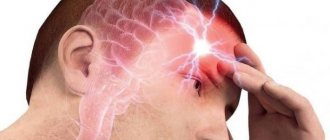- home
- Articles
- Schedule of illnesses
- Do they take into the army with VSD?
»
»
»
Updated: October 24, 2021
Free hotline for conscripts and their parents
8
Vegetative-vascular dystonia or VSD is a chronic disorder of the autonomic nervous system. It is possible to get rid of the manifestations of the disease, but any negative external factors can provoke a relapse. Compulsory military service is inextricably linked with heavy physical exertion and high nervous tension, that is, factors that very often become catalysts that provoke relapses. It is important to know in what cases people are recruited into the army with VSD, and how to be exempt from conscription with this disease.
What is vegetative-vascular dystonia
Vegetative vascular dystonia is a diagnosis not included in the International Classification of Diseases (ICD-10), therefore whether one is allowed to serve with VSD directly depends on the severity of symptoms, the type of pathological activity and the medical history of the conscript.
VSD is a disease that is most often a secondary pathology, often manifesting itself against the background of progression of existing somatic and neurological diseases.
The development of vegetative-vascular dystonia can be caused by predisposing and causative factors.
Callers include:
- Psychogenic, which includes all acute and chronic stress, as well as other types of mental and neurotic disorders. Very often, mental disorders are accompanied by autonomic symptoms, since VSD is an excessive reaction of the human autonomic system to a stressful situation.
- Physical, in particular - excessive fatigue, overheating or hypothermia, hyperinsolation, etc.
- Chemical. These traditionally include chronic intoxications, abuse of nicotine, alcohol and other psychotropic substances. VSD can also be triggered by taking certain medications - bronchodilators, antidepressants, etc.
- Disharmonic, caused by sudden jumps in the level of hormones in the blood.
- Infectious - diseases of the respiratory system, nervous system, etc.
- Diseases of the brain and central nervous system.
- Somatic diseases, including stomatitis, gastritis, diabetes, etc.
Predisposing factors include:
- Heredity and genetic predisposition. Most often, the first symptoms of VSD in this case appear in adolescence and are compensated over time.
- Personality characteristics.
- Unfavorable living conditions - standard of living, environmental conditions, food culture, etc.
- Pathologies that arose in the prenatal period - infections, Rh conflicts, hypoxia, etc.
Deterioration of well-being during VSD at work
Very often there are situations when, before conscription into the army, VSD had a mild form, and already in the service its manifestations became more noticeable. There are well-reasoned explanations for this: first of all, excessive physical activity, little time for rest, and mental stress. All of the above factors can provoke an exacerbation of this disease. In case of severe illness, the army doctor is obliged to send the soldier to the hospital. If the treatment turns out to be ineffective, the fighter may be discharged. A serviceman is sent home when, against the background of vegetative-vascular dystonia, pathologies such as migraine, severe arrhythmia, neuroses, hypotension, disturbances in the respiratory system and much more appear.
Who is not taken from the VVD into the army?
The diagnosis of vegetative-vascular dystonia, in accordance with current Russian legislation, is not an absolute reason for obtaining a deferment from service in the Armed Forces of the Russian Federation. Only men with severe forms of VSD can receive exemption from conscription in case of serious manifestations of certain types of pathology (in accordance with Federal Law No. 53 “On Military Duty and Military Service” dated March 28, 1993).
If a severe form of VSD is detected, the medical commission prescribes a number of additional tests for the conscript, based on the results of which he can receive a medical exemption and avoid conscription for military service.
Need help getting out of the army?
Call us at 8 (800) 550-25-66 or leave a request and we will answer any questions about the army and obtaining a military ID.
Request a call
Conscripts diagnosed with vegetative-vascular dystonia, whose symptoms can be characterized as mild (attacks are more frequent and symptoms quickly disappear), will not be able to receive a deferment from the army.
In accordance with the legislation of the Russian Federation, in particular the Schedule of Diseases, published in Decree of the Government of the Russian Federation No. 565 of July 4, 2013 (as amended on June 1, 2020) “On approval of the Regulations on military medical examination”, a person may be declared unfit, if the illness he or she has occurs with disturbances to the senses and disrupts a person’s life activity for a long time.
Thus, citizens diagnosed with the following types of VSD can avoid conscription service:
- Hypotonic, subject to frequent loss of consciousness, as well as consistently low blood pressure. If a conscript was treated in a hospital due to frequent fainting, the chances of receiving a deferment increase.
- Hypertensive, characterized by high blood pressure, hyperemia, and severe headache. Hypertension may be accompanied by weakness and nausea.
- Cardiac, subject to regular and prolonged pain in the heart, arrhythmia, memory loss and decreased natural immunity.
Even with medical documents confirming the presence of VSD, more than 97% of conscripts are recognized as fit to serve in the ranks of the Armed Forces of the Russian Federation.
When is a conscript considered eligible?
In situations where the medical commission does not consider a conscript with VSD unsuitable for the army, he is assigned categories B2 or BZ, which indicate some restrictions in serving. These young men cannot be enlisted in the Air Force or border troops, but are quite suitable for military service in the navy, in the Ministry of Internal Affairs, chemical units, and in the management and maintenance of anti-aircraft missile systems.
It is noted that the army helps to overcome the manifestations of VSD in cases where disorders of the autonomic nervous system are exclusively functional in nature. A healthy, regular diet, physical activity, and a clear work and rest schedule help increase the body’s adaptive-resistant capabilities.
If after two to three months of service the symptoms continue to bother or intensify, the conscript is sent to the medical unit for hospitalization.
General advice to a conscript soldier diagnosed with VSD:
- notify doctors at the place of duty about the presence of pathology;
- in case of deterioration, submit a report to the commander (company, battalion, unit);
- Do not try to overcome panic attacks, insomnia, long periods of low mood, or headaches on your own.
Military personnel are subject to commission if:
- breathing disorders;
- persistent increase in blood pressure;
- bradycardia (low heart rate);
- migraines;
- fainting.
Grounds for obtaining a deferment
Conscripts with a documented diagnosis of VSD are most often recognized as fit and called up for military service with restrictions on the branch of service.
Only young people with obvious symptoms of vegetative-vascular dystonia can receive a verdict of “unfit”. Most often, those conscripts whose VSD affects the functioning of the cardiovascular system with minimal response to treatment of the disease outside the hospital receive a deferment.
The grounds for obtaining a deferment from military service may be:
- Regular heart rhythm disturbances.
- Identified cardialgia of unknown nature.
- Systematic increase or decrease in blood pressure.
The presence of the listed health problems will have to be proven by providing the medical commission with relevant documents that can confirm the regularity of the occurrence of these problems.
If necessary, the conscript may be sent for additional examination by specialized specialists. If the diagnosis is not confirmed by them, the commission will decide that the identified dysfunction does not pose a threat to the health of the conscript, and he can be sent to serve in the army with some restrictions.
How to document a diagnosis
Suspicion of any disease is based on the patient’s complaints, but to confirm the diagnosis, it is necessary to undergo a full examination.
The following symptoms must be present:
- cardialgia;
- respiratory manifestations - shortness of breath, nervous cough, etc.;
- tachycardia;
- asthenic syndrome;
- psycho-emotional disorders;
- fluctuations in blood pressure;
- cardiac arrhythmia.
Examination methods:
- ECG monitoring
- blood pressure measurement
- Ultrasound of the heart, large vessels
- stress tests to determine the adequacy of the cardiovascular system’s response to physical activity
- study of external respiration functions (spirometry);
- gastroscopy;
- radiography of the OGK;
- Ultrasound of the abdominal organs;
- laboratory tests of blood, urine, feces;
- study of the functional state of the brain (electroencephalography).
The diagnosis is established after a thorough, comprehensive examination, excluding other pathologies of the blood vessels, heart, stomach, intestines, etc.
In addition, in order to prove the severity of the disease, each time you feel unwell, you must seek help from specialists, make sure that symptoms, treatment, fainting, and other important points are recorded in the card.
Confirmation of vegetative-vascular dystonia at a medical examination
In most cases, doctors who conduct medical examinations of conscripts believe that the diagnosis of VSD is not an obstacle to military service. The only exception may be service in some special forces, service in which is associated with serious physical and psychological stress. Therefore, after the diagnosis is established, the conscript is assigned the status of “limited fit” and the types of wax are determined where it is recommended to exclude service.
To receive a deferment from the army with a diagnosis of vegetative-vascular dystonia in 2021, you must provide the medical commission with documents confirming the fact of regular treatment for several years and its ineffectiveness.
Such documents include:
- Medical card of the conscript indicating the diagnosis.
- Notes on the dates of presentation to a medical institution with symptoms.
- Treatment algorithm prescribed by a specialist.
- Documents confirming the facts of research (tests, CT, MRI, etc.)
- Prescriptions for medications prescribed by the attending physician.
- Referrals to hospital.
- Final diagnosis signed and stamped by the attending physician.
In addition, the commission must be provided with a document confirming the presence of a chronic disease.
IMPORTANT! If a conscript sought medical help due to symptoms of VSD less than once a year, the diagnosis will not be considered as a basis for granting a deferment from military service.
Reviews
Dear readers, was this article helpful? What do you think about the diagnosis of vegetative-vascular dystonia and military service? Leave feedback in the comments! Your opinion is important to us!
Andrey
“With vegetative-vascular dystonia, getting category “B” is unrealistic. It’s faster to serve than to prove the severity of the disease.”
Oleg
“I have had VSD since I was a teenager. Frequent headaches and weakness. I went through all kinds of examinations, no pathologies were found. They write in conclusion - healthy. In the army I often felt unwell, but I served.”










